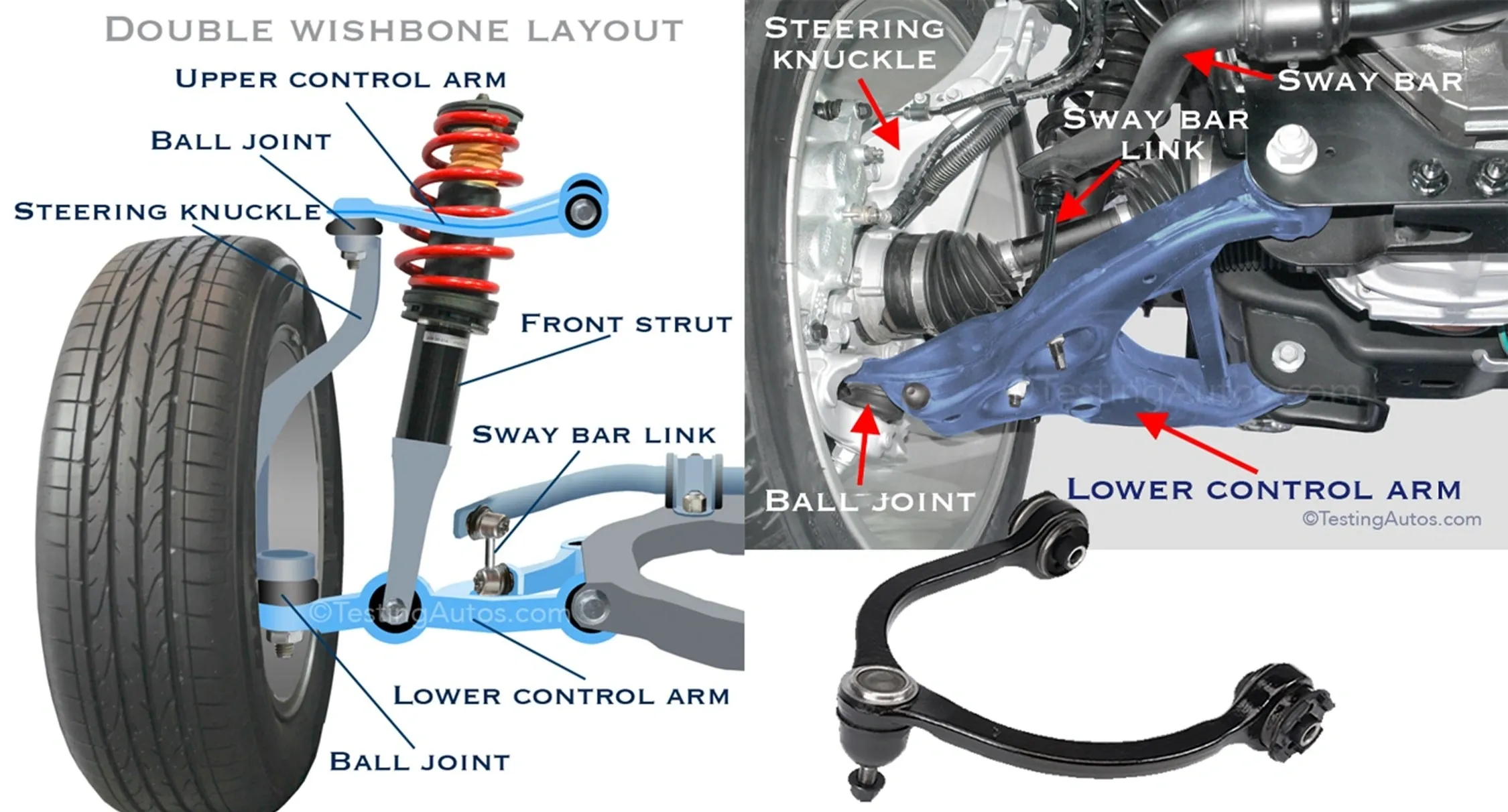In the intricate world of vehicle suspension systems, control arm bushings play a critical role in ensuring smooth and stable operation. These often-overlooked components are integral to the structural integrity and performance of a vehicle’s suspension, impacting both comfort and handling.
What Are Control Arm Bushings?
Control arm bushings are cylindrical rubber or polyurethane mounts that connect the control arms to the chassis of a vehicle. Control arms, also known as A-arms, are vital suspension components that link the wheels to the chassis and allow for vertical movement while maintaining stability during steering and cornering.
The primary function of control arm bushings is twofold: they provide a cushioned connection between the control arm and the vehicle’s frame or subframe, and they allow for slight movement and flexing of the control arm as the suspension travels over bumps and uneven road surfaces. This flexibility is crucial for absorbing road shocks and vibrations, thereby enhancing ride comfort and reducing noise, vibration, and harshness (NVH) levels inside the vehicle cabin.
Types of Control Arm Bushings
Control arm bushings come in various types and materials, each offering different characteristics in terms of durability, performance, and comfort:
- Rubber Bushings: These are the most common type of control arm bushings found in vehicles. They provide good vibration damping and noise isolation, making them ideal for everyday driving conditions. However, rubber bushings can degrade over time due to exposure to heat, oils, and road contaminants.
- Polyurethane Bushings: Polyurethane bushings offer improved durability and resistance to wear compared to rubber bushings. They provide tighter suspension feel and better responsiveness, making them popular among performance-oriented drivers. However, polyurethane bushings may transmit more road noise and harshness to the cabin compared to rubber.
- Hybrid Bushings: Some vehicles use hybrid bushings that combine elements of both rubber and polyurethane to achieve a balance between comfort and performance.
The choice of bushing material often depends on the vehicle’s intended use, driver preferences, and the specific suspension design.
Signs of Worn or Failing Control Arm Bushings
Over time and through regular use, control arm bushings can wear out or deteriorate, compromising their effectiveness and potentially affecting vehicle handling and safety. Common signs of worn or failing control arm bushings include:
- Excessive Noise: Clunking, banging, or squeaking noises from the front suspension when driving over bumps or during cornering.
- Vibration: Increased vibration felt through the steering wheel or chassis, especially at higher speeds.
- Uneven Tire Wear: Irregular tire wear patterns, such as cupping or feathering, which may indicate alignment issues caused by worn bushings.
- Loose or Imprecise Steering: A noticeable decrease in steering responsiveness or precision, particularly during cornering or lane changes.
- Visible Wear or Damage: Cracks, tears, or deformation in the bushing material, or signs of movement or play between the control arm and chassis mounting points.
Replacing Control Arm Bushings
When signs of wear or failure are detected, it’s essential to replace the control arm bushings promptly to restore vehicle stability and ride quality. Depending on the vehicle’s design, replacing control arm bushings may involve varying levels of complexity. In some cases, it may be more practical to replace the entire control arm assembly, especially if the bushings are integrated or pressed into the arm.
Professional inspection and replacement by a certified mechanic are recommended to ensure proper installation and alignment, thereby optimizing suspension performance and safety.
Conclusion
Control arm bushings are vital components in vehicle suspension systems, providing crucial support, flexibility, and damping characteristics that contribute to ride comfort, handling precision, and overall vehicle safety. Understanding their role and recognizing signs of wear or failure can help vehicle owners maintain optimal suspension performance and prolong the lifespan of their vehicles. By prioritizing regular inspection and timely replacement of control arm bushings, drivers can enjoy smoother rides and enhanced driving experiences on the road.
In conclusion, control arm bushings may seem like small components, but their impact on vehicle dynamics and comfort cannot be overstated. With proper care and attention, these critical parts ensure that your vehicle’s suspension operates smoothly and efficiently, contributing to a safer and more enjoyable driving experience for miles to come.
